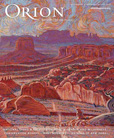
“The public image and history of the National Parks is part of a narrative that is tied to settler history of North America and largely closed to further exploration or examination. When the narrative of the parks is opened up then the history, names and languages of the Native peoples who occupied that land are visible, but so small they are almost impossible to read. Their histories, names and languages are simply images or artifacts to the story of the National Parks.
The narrative of Native peoples is obscured by the new story created out of broken treaties, government sanctioned removal of tribes, and the sale of Indian land.
A new romanticized version of Native peoples and their history replaces their own stories and creates a role for them as artifacts of the past rather than inhabitants of the present.
The story of the National Parks does not include the ways that those lands were not “wilderness” to be conserved but rather were places that had both meaning and use for the Native peoples who lived in relationship with them. The beauty of the National Parks cannot be denied and neither can the history of Native peoples who stewarded those lands before the history of settlers began.”
“You Can’t Judge A Book By Its Cover” for Orion Magazine July/August/September/October 2016 “Whose Parks are These?”
edited by Carolyn Finney
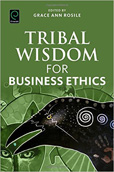
“When most people use the word relationship, they seem focused on human relationships – our connection to each other. And this connection is often centered on similarities and compatibility. Yet the challenges of our age are firmly rooted in incommensurability – places where core values and beliefs are fundamentally different. Using my grandmother’s response still sends me back to a place that is large enough and mysterious enough to hold the tension of opposition within the same breath without creating separation. This is not something I understand, but I know when it is present as I listen to someone or something that contradicts my core values or beliefs. This feeling allows me to stop and listen for the birdsong or sound of wind and changes of light. It infuses my immediate impulse to contradict or advocate for my own position with spaciousness to listen.“
“The Trees Are Breathing us: An Indigenous View of Relationship in Nature and Business ” with Matt Kolan
Tribal Wisdom for Business Ethics Edited by Grace Ann Rosile Emerald Press 2016
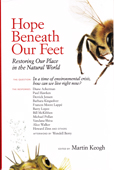
“What I am invoking by indigenous mind is the power of re-energizing our world with all of the hundreds of senses that open our awareness to the web of relationships that are the Earth. The power of this consciousness to renew, adapt and regenerate in new forms is without question more powerful than our single species. Accessing this means a commitment to slowing down, remembering and re-conceiving on a smaller scale to reclaim intimacy with nature and its layers of species as an aspect of my own essential nature. In this way I remain aware of being uniquely indigenous to this planet through space, time and mind. Indigenous mind is the innate ability to become aware of the Earth at an intimate and dynamic level and respond to the messages and stimuli from the beings and life in the moment.
“Indigenous Mind”
Hope Beneath Our Feet: Restoring Our Place in the Natural World
North Atlantic Press
September 2010
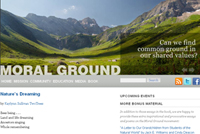
Moral Ground
“Nature’s Dreaming”
Whole Thinking Journal,
Summer 2010
“Nature’s Dreaming”
Moral Ground
Trinity University Press
September 2010
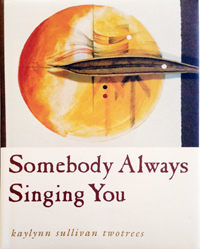
“Like Grandmother Mabel I want my granddaughter to remember everything I do, but, even as I tell the story, I find myself pulling out the strands of strongest connection. It is not that one fact has more truth than another but rather that it clarifies the color, texture and line of my story.
So stories are created, woven together not chronologically but magically to strengthen the connection to the ancestors, the family and the earth. The story I am weaving for Wind in the Mountains and for her granddaughter pulls in many worlds, and the women from those worlds have chosen to be part of it. I am still unpeeling the layers of meaning in Grandmother Mabel’s words. Each remembering reveals fuller meaning and enriches the legacy of my family”
“Somebody Always Singing You”
University Press of Mississippi 1997
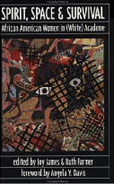
“This is all a part of who I am as a teacher and seeker. This is part of the body of information I bring to a classroom or a workshop. These experiences, like learning with the elders of the tribes, are key to the journeys of knowledge. The challenge of linking this kind of learning with the traditional systems of pedagogy excites me and frustrates me. I am excited to bring primarily oral traditions, rhythmic cultures, and the song and dance of living into the academic curriculum. I am frustrated by the fact that those who seek me out and hire me have not resolved their own doubts about “doing/living the vision” as an integral part of the critical thinking process of pedagogy. What remains at issue for me are the areas of focus, intention, question and commitment. These are the areas that prepare our young for the hero’s mythic journey- the search for self after initiation into the tribe.”
Mixed Blood, New Voices”
“Spirit, Space & Survival: African American Women in (White) Academe,
edited by Joy James and Ruth Farmer. Foreword by Angela Y. Davis
Routledge, 1993
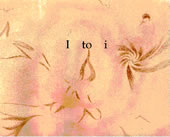
“In the dreadful and marvelous chaos and consistency of daily life, a memory teases me. When it is strong, I reach for it to give it shape – as an idea, a thought, an object, a person, a set of events – held loosely in the grasp. This always fails, leading me to restlessness, unfocused desire, waiting to be abated by having or getting something- anything. Sometimes (seldom, I am loath to admit) I simply wait, hoping it will reveal itself to my patience. The memory that stretches me to cosmic proportion and shrinks me to a detail of what is.”
“I to i”
whanau press 1998